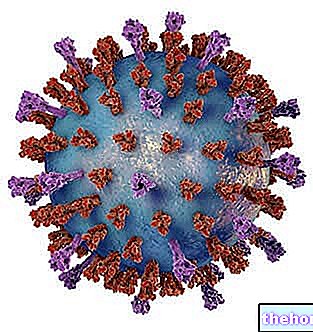Generality
Mycoses are infections due to pathogenic fungi.
Pathogenic fungi are eukaryotic, unicellular or multicellular organisms, capable of causing disease in humans or other animal species.

There are various parameters to classify mycoses. The most frequently used parameter is the site of infection.
According to the site of infection, mycoses are divided into: superficial mycoses, cutaneous mycoses, subcutaneous mycoses, systemic mycoses due to primary pathogens and, finally, systemic mycoses due to opportunistic pathogens.
What is mycosis?
Mycosis is the medical term for an "infection caused by pathogenic fungi (or fungal infection).
Pathogenic fungi are eukaryotic, unicellular (N.B: in this case they are among the microorganisms) or multicellular organisms, which can cause disease in humans or other animal species.
EPIDEMIOLOGY
As will be seen in the next chapters, mycoses mainly affect the skin.
In 2010, fungal skin infections represented the fourth most common disease in the world, with 984 million people affected.
Causes
Various factors can favor the appearance of a mycosis in humans, including:
- The use of antibiotics. Prolonged and / or inadequate intake of antibiotics causes the destruction of the gastrointestinal bacterial flora. The latter has the task of controlling the proliferation of potentially pathogenic fungi, physiologically present in the human organism. The compromise of the bacterial flora makes it easier for the potentially pathogenic fungi to spread in the affected organism.
- The reduced efficiency of the immune system. The immune system is the defensive barrier of an organism against threats coming from the external environment, such as for example viruses, bacteria, fungi etc., but also from the "internal environment, such as for example cancer cells (the so-called" crazy cells " ) or malfunctioning.
To compromise the efficiency of the immune system can be morbid conditions, such as AIDS (ie HIV infection) or the intake of certain drugs, such as corticosteroids, chemotherapy or immunosuppressants.
Furthermore, it is good to remember that an inefficient immune system is also present in very young subjects (N.B: it is not yet fully developed) and in very elderly subjects (N.B: it is a completely physiological decrease in efficiency). - The presence of diabetes. The high presence of glucose in the blood (hyperglycemia), induced by diabetes, is a factor favoring the proliferation of some fungi that populate certain anatomical areas of the human body and which, under normal conditions, are completely harmless.
Categories at risk of mycosis:
- AIDS sufferers
- Diabetics
- Very young subjects
- Very elderly subjects
- People undergoing chemotherapy to treat a tumor
- People undergoing prolonged corticosteroid treatments
- Organ transplant, as a result of the use of immunosuppressants
- People who have taken antibiotics for long periods of time
Classification
Pathologists classify mycoses in three different ways:
- According to the site of infection: the classification that considers the site of infection distinguishes mycoses according to the type or types of tissue in which fungal colonization begins and according to the degree of tissue involvement.
According to this classification, there are superficial mycoses, cutaneous mycoses, subcutaneous mycoses, systemic mycoses due to primary pathogens and systemic mycoses due to opportunistic pathogens. - According to the path of acquisition: the classification that considers the path of acquisition distinguishes mycoses on the basis of the origin of the pathogenic fungus, which can be exogenous (ie from the outside) or endogenous (ie from the inside).
According to this classification, there are exogenous mycoses and endogenous mycoses.
Acquisition of exogenous mycosis can occur through airborne transmission, skin transmission or percutaneous transmission.
The acquisition of an endogenous mycosis, on the other hand, can occur due to a colonization process by an element of the organism's microbial flora or due to the reactivation of a previous fungal infection. - According to virulence: the classification that considers virulence distinguishes mycoses on the basis of the pathogenic power of the infecting fungal agent.
According to this classification, there are primary mycoses and opportunistic mycoses.
Primary mycoses are due to fungal pathogens capable of establishing an infection in healthy subjects; in these cases, the pathogens are called primary pathogens.
Opportunistic mycoses, on the other hand, are due to fungal pathogens capable of establishing an infection only in people with a compromised immune system; in these situations, the pathogens are called opportunistic pathogens.
The classification of mycoses according to the site of infection is the most popular and widespread in the pathology books.
SUPERFICIAL MYCOSES
Superficial mycoses affect the outermost layers of the skin and hair / hair.
The best known and most common superficial mycoses are:
- Piedra black. It is due to the fungal pathogen known as Piedraia hortae. It is a disease of the hair shaft, which causes the formation of brown / black nodules in the scalp. It is an uncommon mycosis in general, but particularly widespread in tropical areas of Africa and South America.
Poor personal hygiene favors its spread. - Piedra white. It is due to fungal pathogens Trichosporon, In the case Trichosporon asahii, Trichosporon beigeii, Trichosporon inkin And Trichosporon mucoides.
Generally, white piedra involves the formation of numerous and small, round, white nodules in the hair and skin hairs of the groin and armpits.
More rarely, it affects the outer layers of the skin with the same formations.
It is a mycosis present mainly in tropical and subtropical geographical areas. Poor personal hygiene favors its spread.
The pathogens that cause white piedra tend to act as opportunistic pathogens. - Pityriasis versicolor (or tinea versicolor). It is due to the fungal pathogen Malassezia furfur.
It is a superficial mycosis that causes "hyperpigmentation or" hypopigmentation of the skin.
It mainly affects the anatomical areas of the chest, neck, back and shoulders.
Risk factors for pityriasis versicolor are heat, humidity, increased sebaceous secretions, insufficient personal hygiene and immunosuppression, which may be due to the intake of corticosteroids, pregnancy, malnutrition, diabetes, etc. .
Pityriasis versicolor is among both primary mycoses and opportunistic mycoses. - Tinea nigra. It is due to the fungal pathogen Hortaea (or Phaeoannellomyces) werneckii. Its presence determines the formation of skin spots of variable size, irregular, often isolated, of brown or black color and localized at the level of: palms of the hands and soles of the feet.
Spots aside, tinea nigra does not cause particular symptoms and is not contagious.
The agents that cause it are particularly widespread in Central and South America, Africa and Asia. Children, adolescents and young adults are particularly at risk of infection.
In general, superficial mycoses do not evoke any immune response.
CUTANEOUS MYCOSES
Cutaneous mycoses affect the keratinized layers of the epidermis (N.B: keratinized means that they contain the keratin protein) and the skin appendages, such as hair / hair and nails.
Unlike superficial mycoses, cutaneous mycoses evoke an immune response and involve the degradation of the epidermal layers of keratin, inducing irritation, inflammation or, in some cases, even allergic reactions. Pathologists also call cutaneous mucous membranes with the generic term "ringworm".
The fungi that cause cutaneous mycoses are better known as dermatophytes or dermatomycetes. Dermatophytes have the particularities of being filamentous fungi and reproducing by means of spores.
In nature, there are three genera of dermatophytes: the genus Microsporum, the genre Trichophyton and gender Epidermophyton.
Species of the genus Microsporum of major clinical interest are:
- Microsporum audouinii. It causes ringworm in the scalp or in the skin. It is a particularly widespread pathogen in tropical areas and in the poorest areas of Africa.
Poor personal hygiene favors its spread. - Microsporum canis. It mainly affects dogs, cats and livestock, but it can also spread to humans, especially among young people who live in close contact with infected animals.
In humans, it causes ringworm in the scalp and skin of different areas of the body.
For unknown reasons, it is particularly prevalent in and around Iran. - Microsporum gypseum. It can affect the skin of different areas of the body and the scalp, causing ringworm.
The best known species of the genus Trichophyton I'm:
- Trichophyton rubrum. It is responsible for a ringworm which can affect the feet, hands, groin and / or nails. Nail fungus is better known as onychomycosis.
- Trichophyton mentagrophyes. It is the fungal agent responsible for the condition known as athlete's foot.
Athlete's foot is a fungal infection that affects the areas between the toes, causing: red and itchy skin; skin thickening; skin peeling; blistering; appearance of skin cracks; smelly feet; thicker nails. - Trichophyton verrucosum. It mainly infects horses, donkeys, dogs and sheep, but it can also be transmitted to humans.
In the human being, it affects the scalp and can cause areas of alopecia or real baldness.
The subjects most at risk are those who live in close contact with the aforementioned categories of animals.
Finally, the most important species of the genus Epidermophyton è:
- Epidermophyton floccosum. It can cause ringworm in the feet, legs, arms and nails (onychomycosis).
Experts also classify cutaneous mycoses on the basis of the natural habitat of the fungal pathogen that causes them.
Based on this classification, there are geophilic mycoses, zoophilic mycoses and anthropophilic mycoses.
Geophilic mycoses
Geophilic mycoses are fungal infections whose triggering pathogen lives in the soil and is a saprophytic soil fungus. Contact with contaminated soil can induce its spread.
An example of geophilic mycosis is that sustained by Microsporum gypseum.
Zoophilic mycoses
Zoophilic mycoses are fungal infections whose triggering pathogen is a primary parasite of animals, which can be transmitted to humans by close contact.
Examples of zoophilic mycoses are the conditions induced by Microsporum canis or Trichophyton verrucosum.
Anthropophilic mycoses
To conclude, anthropophilic mycoses are fungal infections whose pathogen is a primary parasite of humans, which rarely infects animals.
Examples of anthropophilic mycoses are the conditions supported by Trichophyton rubrum or Epidermophyton Floccosum.
- Microsporum audouinii
- Microsporum canis
- Microsporum gypseum
- Trichophyton verrucosum
- Microsporum audouinii
- Microsporum canis
- Microsporum gypseum
- Epidermophyton floccosum
- Trichophyton rubrum
- Trichophyton mentagrophyes
- Trichophyton rubrum
- Trichophyton mentagrophyes
- Epidermophyton floccosum
SUBCUTANEOUS MYCOSES
Subcutaneous mycoses are fungal infections that can begin in the dermis, subcutaneous tissues (hypodermis), muscles, tendons or bone tissue. Like cutaneous mycoses, they evoke an immune response.
The fungal pathogens that cause subcutaneous mycoses have the soil as their natural habitat, and become infectious only if they enter the organism through wounds or cuts of the skin. They are particularly widespread in tropical and subtropical areas of Africa, India and South America. .
After extensive research, pathologists have identified at least three different types of subcutaneous mycosis:
- Chromoblastomycosis (or chromomycosis). It is responsible for verrucoid, painful and itchy lesions that are slow growing and vary in size. On histological examination, these verrucoid lesions have particular cells, called muriform cells, which represent the distinctive feature of chromoblastomycosis.
Generally, chromomycosis affects only the subcutaneous tissues, so it does not involve the bones, muscles and tendons
Fungal agents that can cause chromoblastomycosis include: Fonsecaea compacta, Fonsecaea pedrosoi, Cladosporium carionii, Phialophora verrucosa. - The mycetoma. It typically causes a granulomatous reaction at the site where it originates. This granulomatous reaction results in the formation of tumor-like abscesses, accompanied by chronic inflammation, swelling and ulceration of the infected anatomical region.
Usually, mycetoma develops from the subcutaneous tissues, and then spreads to bone and skeletal muscle tissues.
The most common pathogens capable of causing mycetoma are: Madurella mycetomatis, Madurella grisea And Aspergillus. - The sporotrichosis. The fungus that causes this subcutaneous mycosis is the so-called Sporothrix schenckii.
Once it has entered the organism, Sporothrix schenckii it is able to enter the lymphatic system, travel in the lymphatic vessels and disseminate in various organs of the human body, causing: lung infections, bone infections, joint infections, endophthalmitis, meningitis and sinusitis.
A place in the world where it is particularly widespread Sporothrix schenckii is the state of Peru, in South America.
Subcutaneous mycoses are difficult to treat and, in some cases, may require somewhat invasive surgery. For example, mycetoma is resistant to treatment with chemotherapy and often involves amputation of the infected anatomical area.
SYSTEMIC MYCOSES
Systemic mycoses are infections that affect a large part or all of the organism.
As anticipated, there are two types of systemic mycoses: systemic mycoses due to primary pathogens and systemic mycoses due to opportunistic pathogens (NB: readers can recover the meaning of primary pathogens and opportunistic pathogens by consulting the chapter dedicated to the classification of mycoses, precisely where we speak of classification according to virulence).
SYSTEMIC MYCOSES DUE TO PRIMARY PATHOGENS
In the case of systemic mycoses due to primary pathogens, the canonical route that allows the infectious agent to access the host organism is the respiratory tract.
Then, through the respiratory tract, the pathogen reaches the lungs and, from the lungs, spreads throughout the body.
Classic examples of systemic mycoses due to primary pathogens are:
- Blastomycosis, the responsible agent of which is Blastomyces dermatitidis.
In the United States, blastomycosis causes 30 to 60 victims each year. - Coccidioidomycosis (or valley fever), the responsible agents of which are Coccidioides immitis And Coccidioides posadasii.
In North, Central and South America, coccidioidomycosis causes 50 to 100 victims every year. - Histoplasmosis, the responsible agent of which is Histoplasma capsulatum.
In the United States, histoplasmosis causes about 50 people to die each year. - Paracoccidioidomycosis (or South American blastomycosis), the responsible agent of which is Paracoccidioides brasiliensis.
SYSTEMIC MYCOSES DUE TO OPPORTUNIST PATHOGENS
In the case of systemic mycoses due to opportunistic pathogens, infectious agents can exploit, in addition to the respiratory tract, also other routes of entry, such as the digestive system and the vascular system (through the use of needles or needle-cannulas in the field doctor and drug addicts).
Classic examples of systemic mycoses due to opportunistic pathogens are:
- Candidiasis, the responsible agents of which are such fungi Candida (like Candida albicans).
- Cryptococcosis, the responsible agent of which is Cryptococcus neoformans.
- The aspergillosis, whose responsible agents are the fungi of the genus Aspergillus.
- Penicilliosis, the causative agent of which is Penicillium marneffei.
- Zygomycosis, whose responsible agents are some Zygomycetes.
- Pneumocystosis, the causative agent of which is Pneumocystis carinii.
People most exposed to the danger of systemic mycoses due to opportunistic pathogens:
- AIDS sufferers
- Subjects who, following a prolonged antibiotic treatment, present an "alteration of the gastrointestinal flora
- Transplant recipients, who take immunosuppressants against organ rejection
- Cancer patients undergoing chemotherapy.
Prevention
The most classic mycosis prevention measures consist of:
- keep the skin clean and dry,
- maintain good personal hygiene,
- wash sports clothing after use
- avoid contact with infected people or animals (N.B: many fungal infections are contagious).
Treatment
Treatment of mycosis consists of the administration of antifungal drugs, known as antifungals.
Depending on the type of mycosis, doctors may prescribe topical antifungals or systemic antifungals.
Examples of medicines against mycosis are: fluconazole, amphotericin B, ketoconazole, itraconazole and terbinafine.



























